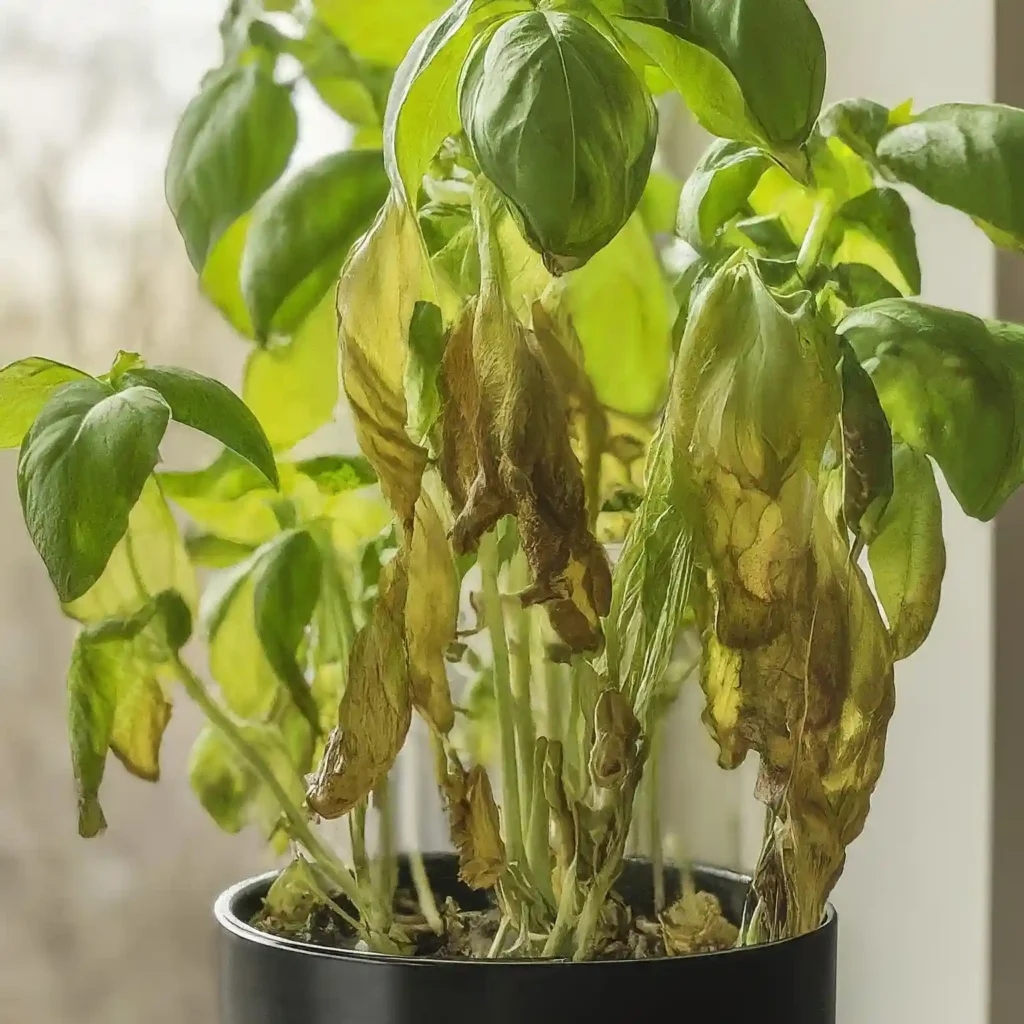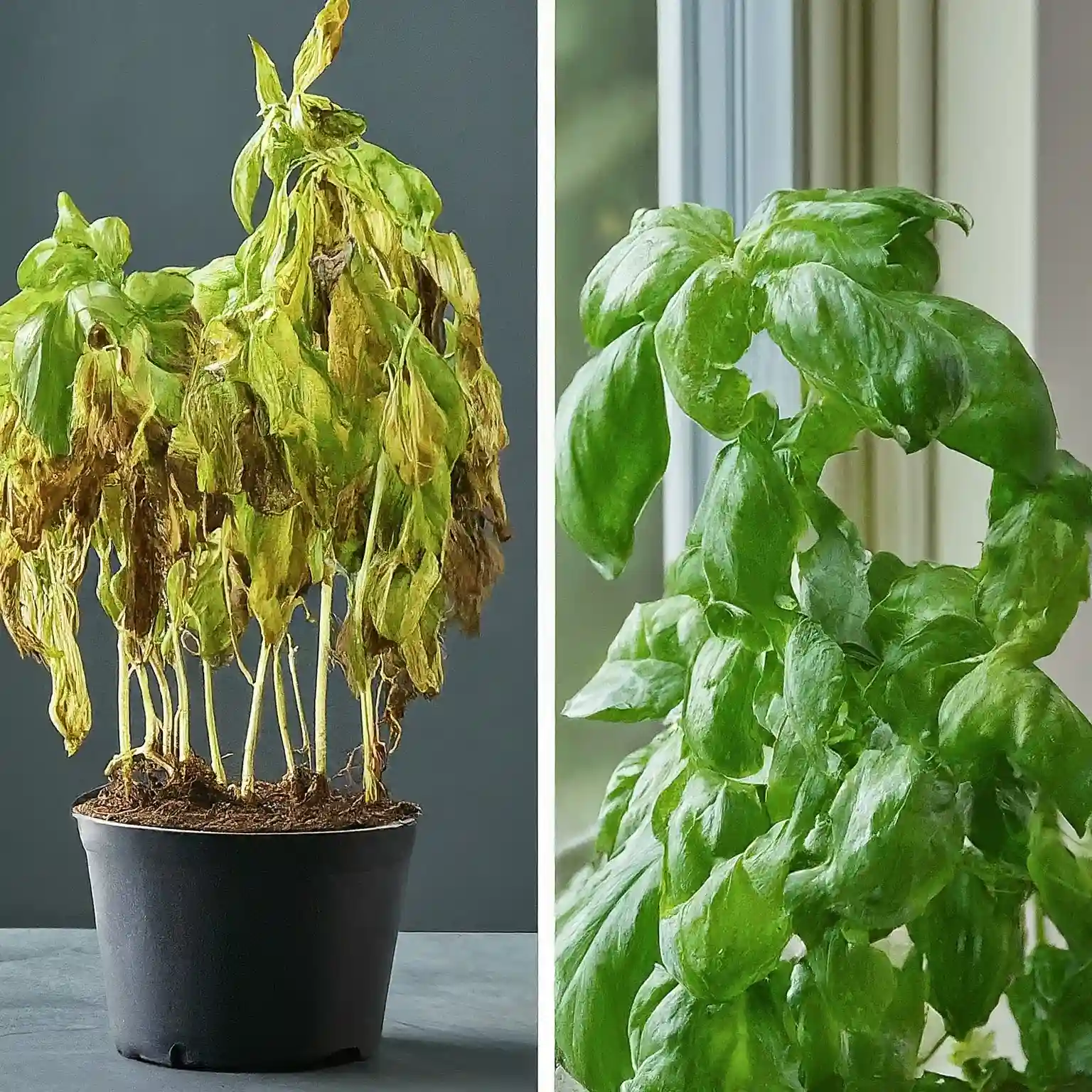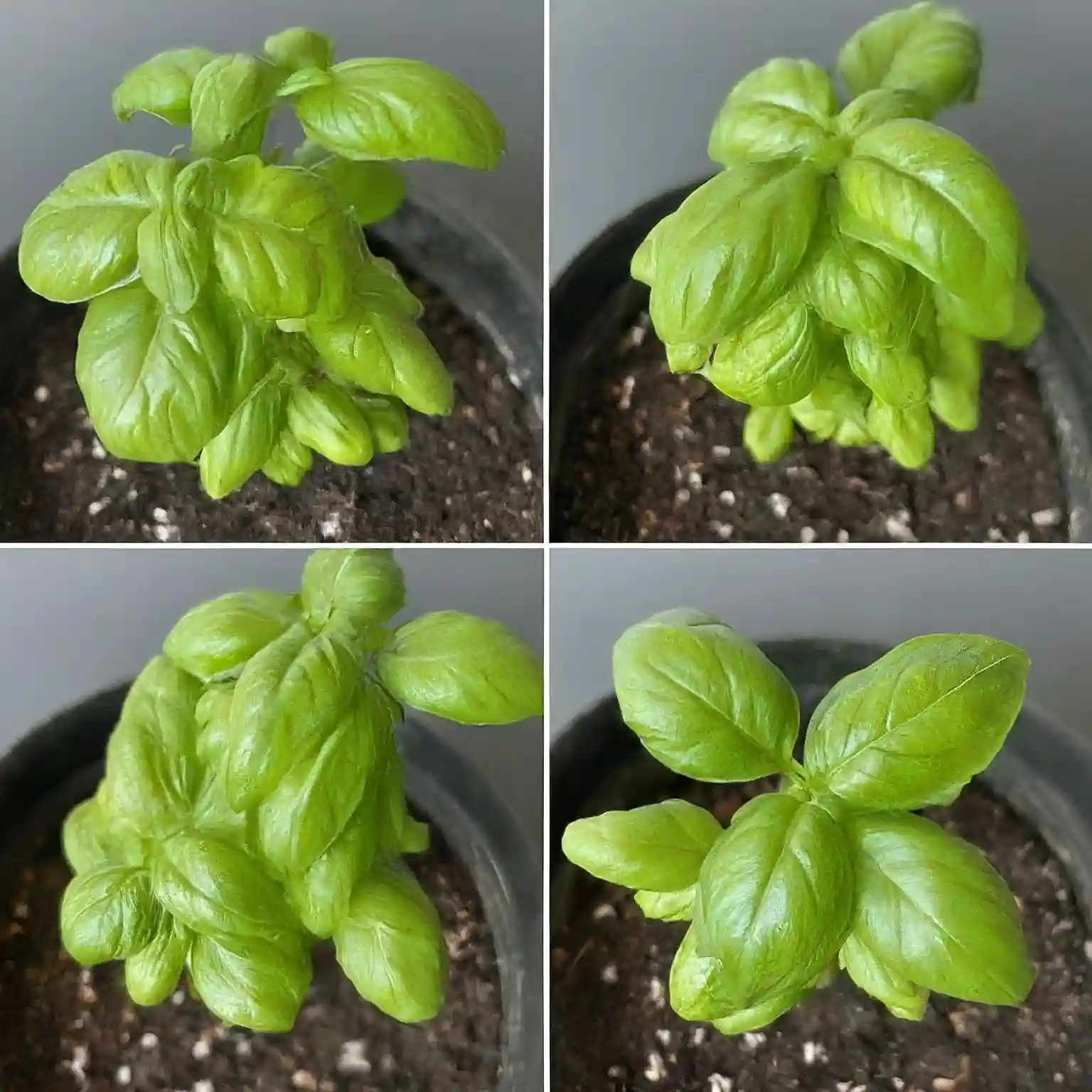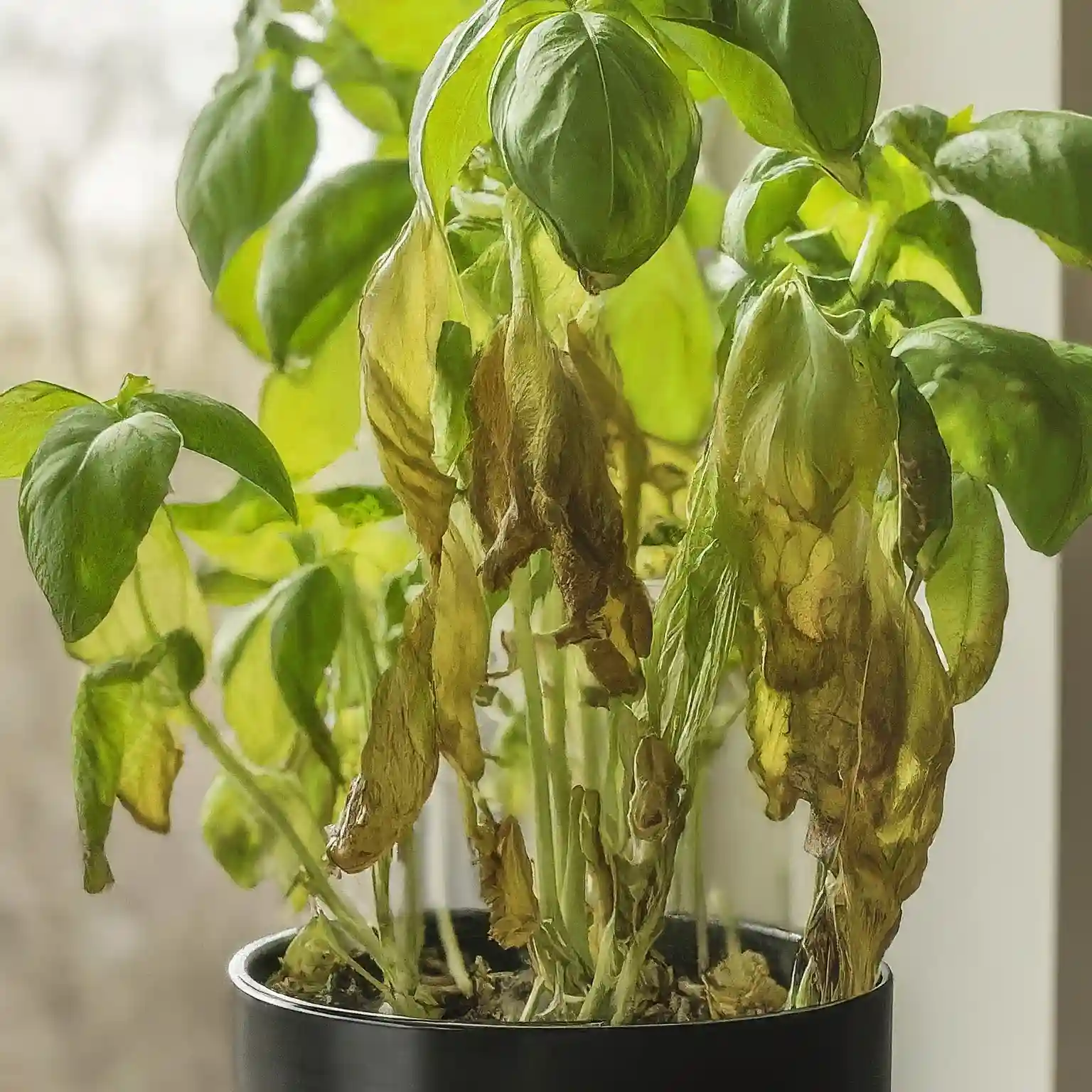Why Does My Basil Keep Dying?
Basil is a delicate herb that can be susceptible to a variety of problems, including overwatering, underwatering, lack of sunlight, and nutrient deficiencies. To keep your basil plant healthy, make sure to water it regularly, but allow the soil to dry out slightly between waterings. Basil also needs plenty of sunlight, so place it in a sunny spot in your garden or home. If your basil plant is not getting enough nutrients, fertilize it with a balanced fertilizer.
Why Does My Basil Keep Dying? Troubleshooting Your Basil Troubles

Do you have a basil plant that no longer looks healthy and vibrant? Are you struggling to keep it from wilting, yellowing, or dying altogether? Don’t worry! Understanding the causes of your plant’s problems is the first step to bringing it back to life. We’ll delve into the common culprits behind the question, “Why does my basil keep dying?” and arm you with the knowledge to revive your beloved herb.
The Root Causes of Dying Basil Plants
Let’s delve into the most common reasons why basil plants decline, and explore practical solutions to breathe new life into yours.

Overwatering: The Silent Killer
We all want to shower our plants with love, but too much water can be just as detrimental as neglect. Overwatering is one of the leading causes of basil plant demise.
- Symptoms: Yellowing leaves, drooping stems, mushy roots, and the potential for root rot (a devastating condition that can destroy the plant’s root system).
- How to fix it: Stick your finger about an inch into the soil. If it feels damp, hold off on watering. Allow the top few inches of soil to dry out slightly between waterings. Ensure your pot has proper drainage holes to prevent water from pooling around the roots. For more information on overwatering, check out our article on the signs and how to fix them.
Underwatering: When Your Basil Thirsts
While overwatering is the more common culprit, basil can also suffer when it doesn’t receive enough moisture. This is especially important to monitor during hot weather or for basil plants growing in containers.
- Symptoms: Wilting leaves, dry and crispy leaf edges, slow growth, and soil that pulls away from the edges of the pot are signs your basil plant is thirsty.
- How to fix it: Water your basil thoroughly when the top inch of soil feels dry. Water until you see it flowing out of the drainage holes. Pay close attention to how quickly the soil dries out – you may need to water more frequently in warm environments or for container-grown basil. For a comprehensive guide on watering your basil plant, check out our article.
Insufficient Sunlight: Is Your Basil Getting Enough?
Basil craves sunlight! It’s a sun-worshipping herb that thrives with at least 6-8 hours of direct sunlight each day.
- Symptoms: Weak, spindly growth, pale leaves, and a plant that leans heavily towards the light source indicate a lack of adequate sunshine.
- How to fix it: Move your basil to a sunnier location, whether it’s a brighter windowsill indoors or a spot in your garden that receives plenty of direct sunlight. For more tips on maximizing sunlight for your basil, read our detailed guide.
Temperature Troubles: Too Hot or Too Cold
Basil is a warm-weather herb that hails from tropical regions. It’s happiest with temperatures between 65-85°F (18-29°C). Exposure to extreme cold or heat can stress your plant and cause a decline in health.
- Symptoms: Frost damage (blackened or wilting leaves), slow or stunted growth in cold weather, and wilting or drooping in extreme heat are all potential signs of temperature stress.
- How to fix it: Protect your basil from sudden temperature fluctuations. If you’re growing basil outdoors, bring it inside when temperatures drop below 50°F (10°C). Avoid placing it near drafty windows or air conditioning vents. During heatwaves, provide some afternoon shade, especially if your basil is in a container, which can heat up quickly.
Poor Soil Conditions: The Foundation for Healthy Growth
Basil prefers well-draining soil rich in organic matter. Heavy, compacted soil or nutrient-deficient soil can hinder its growth and make it more susceptible to problems.
- Symptoms: Yellowing leaves (may indicate nutrient deficiencies), slow growth, and susceptibility to diseases are signs that your basil may not be getting what it needs from the soil.
- How to fix it: Before planting, amend your soil with compost or well-rotted manure to improve drainage and nutrient content (you can find great tips on soil in this article). Ensure the soil pH is between 6.0 and 7.5 for optimal basil growth.
Pest Infestations: Tiny Invaders, Big Problems
Basil may look tough, but it’s a favorite snack for several tiny pests. While pests might not kill your plant instantly, they can weaken it over time, making it more susceptible to decline.
- Symptoms: Look for small insects on the undersides of leaves, sticky residue (honeydew), distorted or discolored leaves, and a general decline in plant health.
- How to fix it: Identify the pest you’re dealing with. Our articles on common basil pests and getting rid of aphids on basil plants can help with identification and treatment options. For mild infestations, try washing the leaves with diluted insecticidal soap or neem oil. In severe cases, you may need to resort to a targeted pesticide. Always follow product label instructions carefully.
Fungal Diseases: A Stealthy Threat
Humid conditions and insufficient airflow can make basil vulnerable to fungal diseases like downy mildew and Fusarium wilt. These diseases can cause a variety of symptoms and can be difficult to eradicate.
- Symptoms: Look for gray, fuzzy growth on leaves downy mildew, yellowing, spotting, wilting, and stem discoloration.
- How to fix it: Prevention is key! Ensure good air circulation around your basil plants. Avoid overwatering and water at the base of the plant to keep leaves dry. Remove affected leaves immediately. In severe cases of fungal disease, consider using fungicides specifically designed for edible plants, following the instructions carefully. You can find more information and treatment options in our article specifically about fungal diseases.
How to Revive a Dying Basil Plant
If your basil plant is on the brink, don’t despair! With prompt action and some careful attention, you may be able to nurse it back to health.

Immediate Actions: Assess and Adjust
- Diagnose the problem: Carefully examine your basil plant and review the possible causes we’ve covered (watering issues, light, temperature, etc.). This will guide your revival strategy.
- Repot if necessary: If your basil is severely rootbound (roots poking through the drainage holes or circling the pot), repotting into a slightly larger container with fresh soil may aid recovery.
- Prune selectively: Remove damaged leaves and stems to encourage new growth. Don’t be afraid to prune back significantly if the plant is badly affected. Check out our detailed pruning guide for tips.
Long-Term Care Strategies
- Optimize the environment: Address any issues with watering, light, or temperature that you’ve identified as the primary cause of decline.
- Fertilize lightly: A diluted, balanced liquid fertilizer can provide a gentle boost to a recovering plant. Always fertilize after watering to avoid burning the roots.
- Monitor for improvement: Look for signs of new growth and improved health over the following weeks. Don’t get discouraged if recovery is slow; basil can be surprisingly resilient!
The Power of Propagation
If your basil plant seems beyond saving, don’t throw in the towel just yet! You may be able to start anew through the power of propagation.
- When to propagate: Propagation is a great option when most of the plant is damaged, but a few healthy stems remain.
- How to propagate: Basil is remarkably easy to propagate from cuttings. Our step-by-step guide will take you through the process. Propagating your basil is a wonderful way to ensure you have a backup in case of future plant troubles!
Basics Tips for a Thriving Basil Garden
You’ve addressed the common problems and revived your ailing basil. Now, let’s go the extra mile to promote optimal growth and a bountiful harvest!
Companion Planting for Basil Success
Did you know that planting certain herbs and vegetables near your basil can offer benefits? Companion planting can deter pests, attract beneficial insects, and improve overall growth.
- Benefits of companion planting: Plants like tomatoes, peppers, oregano, and marigolds pair well with basil. To find more great companions, check out our article.
- Best plants to grow with basil: Tomatoes and basil are a culinary match made in heaven, and they happen to benefit each other in the garden as well. Marigolds naturally deter certain pests that dislike their scent.
Harvesting for Optimal Growth
Regular harvesting is essential for keeping your basil plant happy, bushy, and productive!
- Correct harvesting techniques: Always pinch or cut basil stems just above a set of leaves to encourage bushier growth. Learn all the proper techniques in our harvesting guide.
- How frequently to harvest: You can start harvesting small amounts of basil as soon as the plant has enough leaves to sustain itself. Frequent harvesting keeps the plant producing new foliage instead of focusing on flowering. Don’t worry about over-harvesting – basil regrows with vigor!
Basil Varieties Demystified
Not all basil plants are created equal! There’s a fascinating variety of basil types, each with its unique flavor profile and uses.
- Popular basil types: Sweet basil, Genovese basil, Thai basil, lemon basil, and holy basil are just a few of the many exciting options to try.
- Choosing the right basil for your needs: Consider culinary uses (pesto, curries, fresh eating), desired flavor profile, and even growth form (compact vs. large). Experimenting with different basil varieties will add a whole new dimension to your herb garden.
FAQs on Dying Basil Plants
Q: My basil leaves are turning yellow. What’s wrong?
A: Yellow leaves can have several causes. Overwatering is a common culprit, but it could also be a sign of nutrient deficiencies or a fungal disease. Carefully examine your plant and its environment in the context of our earlier sections to determine the most likely cause. For more in-depth troubleshooting, check out our article on yellowing basil leaves.
Q: Should I remove the flowers from my basil plant?
A: Yes! Once basil flowers, the plant redirects its energy towards producing seeds instead of growing new leaves. Pinching off flowers as they appear will encourage bushier growth and extend your harvest.
Q: Can I grow basil indoors all year round?
A: Absolutely! With sufficient light (ideally from a grow light or a very sunny windowsill) and careful attention to watering, you can enjoy fresh basil throughout the year. Our indoor basil care guide provides all the tips you need.
Q: My basil seedlings keep dying. Help!
A: Young basil seedlings are more delicate than mature plants. Make sure they are getting enough (but not too much) water, and sufficient light, and are protected from drafts and temperature fluctuations. If you’re starting seeds indoors, ensuring the soil temperature is warm enough for germination is also important.
Conclusion:
Growing basil can be immensely rewarding when you know how to overcome common challenges. Remember, a dying basil plant is rarely a lost cause! By understanding the reasons behind its decline and taking corrective action, you can revive your beloved herb and enjoy its delicious flavor all season long.
